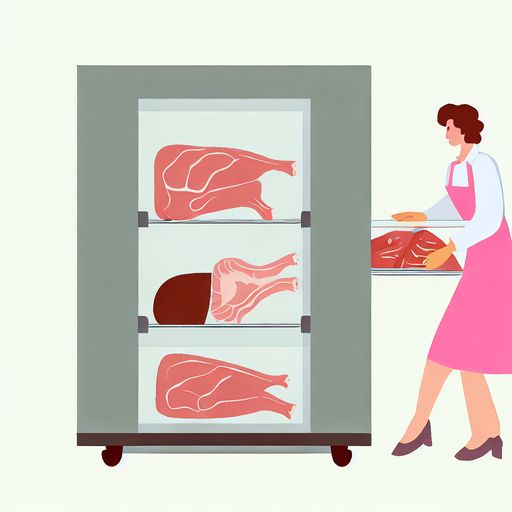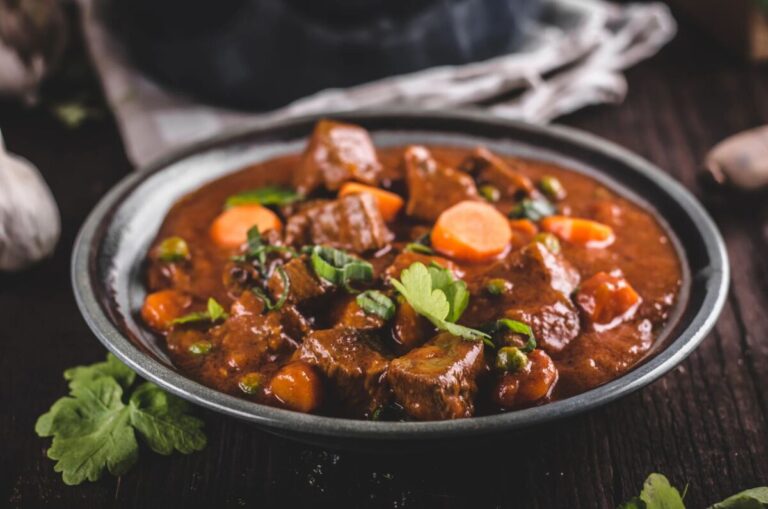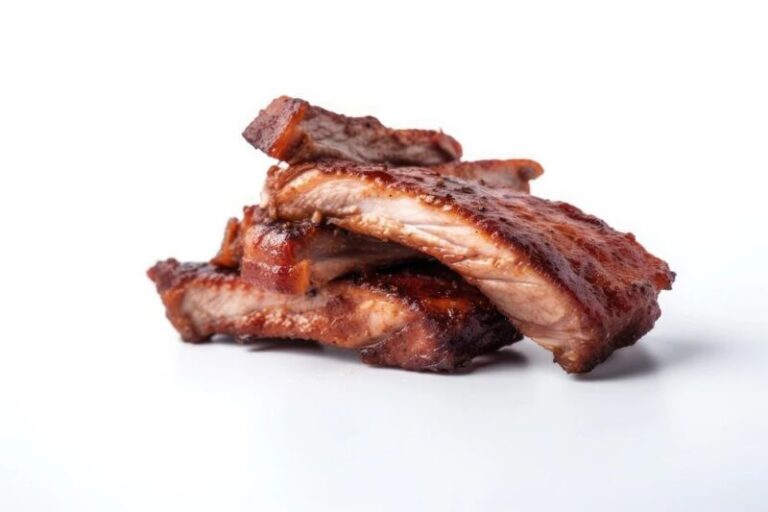How Long Does Meat Last in the Freezer?
Knowing how long meat lasts in the freezer can be difficult. With so many types of meat and variables like packaging and freezer temperature, it’s no wonder there is confusion about frozen meat shelf life.
However, having a good understanding of meat freezer storage times is very important. Freezing is one of the most effective ways to prevent spoilage and keep meat fresh for longer. You don’t want meat lingering in your freezer past it’s prime. But you also don’t want to waste perfectly good meat because you aren’t sure how long it stays good.
This guide breaks down everything you need to know about maximizing meat’s shelf life in the freezer. You’ll get answers to all your most pressing questions like:
- Does meat go bad in the freezer?
- How long can different types of meat be frozen?
- What is the best way to store meat in the freezer?
- Can you refreeze meat after thawing?
Follow these freezing, thawing, and storage tips for keeping meat fresh and safe for months.
Does Meat in the Freezer Go Bad?
First things first, can meat go bad if it’s stored in the freezer? The United States Department of Agriculture (USDA) provides guidelines on how long meat lasts frozen.
USDA Guidelines on Freezing Meat
According to the USDA:
- Meat can be kept frozen at 0°F (-18°C) continuously for up to 1 year before it deteriorates in quality and safety.
- The constant cold temperature keeps meat safe from spoiling and bacteria growth.
So technically, frozen meat won’t ever completely “go bad”. Freezing preserves meat and prevents spoiling.
However, the USDA does note that freezing can’t stop the breakdown of quality over time:
Decrease in Quality Over Time
Even when frozen, subtle changes happen to the meat:
- Freezer burn can occur when air reaches the meat surface, causing dehydration. This affects the texture and color of the meat.
- Flavors can start deteriorating over many months in the freezer.
- The texture may become slightly dry or tough.
While the meat is still safe to eat, you want to freeze meat for a limited time to maintain premium freshness and quality.
How Long Does Meat Last in the Freezer?
Meat freezer life varies quite a bit depending on the type. Here are some general guidelines from the USDA on how long different meats last frozen:
Hot Dogs, Bacon, Sausages, Luncheon Meats, and Ham
These prepared and cured meats will keep well frozen for 1 to 2 months beyond any “sell by” date on the package.
Leftovers and Cooked Dishes
Cooked meat dishes like stews, soups, casseroles, and sandwiches have a freezer life of 2 months.
Fish and Seafood
Fresh fish like salmon and tuna maintain top quality frozen for 2 to 3 months. Shrimp, scallops, and squid keep well frozen for 3 months.
Soups, Broths, and Stews
Homemade broths and meat-based soups and stews stay delicious frozen for up to 3 months.
Ground Meat
Ground beef, pork, and poultry last 3 to 4 months in the freezer.
Beef, Lamb, Pork, Chicken, and Turkey
Whole cuts of beef and pork and chicken pieces last 6 to 12 months in the freezer.
For best results, freeze meat sooner rather than later for maximum freshness. Only freeze meat for the recommended time frames.
How to Store Meat in the Freezer

To get the full freezer life out of meat, it needs to be stored properly. Follow these tips:
1. Use Proper Packaging
Air is the enemy of frozen meats. Exposure to air causes freezer burn.
- For small cuts, individual wrap in plastic wrap or aluminum foil.
- For larger pieces and bulk meat, use freezer-safe plastic bags. Vacuum seal bags are ideal since all air is removed.
- Before sealing any package, press out excess air.
- Wrap again in foil or place inside a freezer bag for extra protection if storing for many months.
2. Label Packages
Include the freezing date so you know when the recommended storage time ends.
3. Use Freezer Containers
Place wrapped meat packages in airtight, freezer-safe plastic containers or bags. This protects from frost buildup and freezer burn odors.
4. Freeze Fast
For best texture, freeze meat as soon as possible after purchasing. Freeze immediately if not using within 4 days.
5. Freeze at Correct Temperature
Set the freezer between 0°F to -10°F. Place meat packages in the coldest section, usually the back.
6. Use Within Timeframe
Refer to the storage times for different meats and use frozen meat within the recommended shelf life for the highest quality taste and texture.
Thawing Meat Safely
Along with proper freezing, safe thawing is also crucial. These are the best ways to thaw meat:
Refrigerator Thawing
For slow, safe thawing, leave meat sealed and place on a plate in the refrigerator. Allow about 8-12 hours per pound of meat.
Cold Water Method
For faster thawing, submerge a seal bag of meat in cold tap water, changing the water every 30 minutes. This reduces thawing time to about 1 hour per pound. Cook immediately.
Microwave Defrost Setting
Microwaves have a defrost function that gradually thaws meat while preventing bacterial growth from warmer outer temperatures. Follow microwave instructions for the times based on the meat’s weight. Cook right away.
Never thaw meat at room temperature. Bacteria multiply rapidly above 40°F.
Can You Refreeze Meat After Thawing?
What if you thawed some ground beef but didn’t end up using it all for dinner? Is it safe to pop the leftovers back in the freezer?
Yes, it is safe to refreeze meat according to the USDA, as long as it was thawed properly in the fridge and hasn’t risen above 40°F for over 2 hours.
However, there may be some loss of quality with refreezing. The texture might get mushier. Flavors can deteriorate faster compared to meat frozen only once.
For best quality, cook thawed meat within 3-5 days. Only refreeze extra thawed meat 1 more time, and use within 2-3 months.
How Long Can Meat Stay in the Fridge Before Freezing?
Fresh meat should be frozen as soon as possible, right? Well, not necessarily.
Meat can be kept 3-5 days refrigerated before freezing for maximum freshness. The cold fridge temperatures keep it safe a while before freezing.
After 3-5 days, bacteria growth and spoilage speed up. Meat may begin developing off-odors, sticky surface slime, or color changes. At the first sign of spoilage, throw it away. Don’t risk foodborne illness.
It’s ideal to use fresh meat within those 3-5 days. But if you need to wait to cook it, go ahead and freeze it. Waiting longer than 5 days isn’t worth the decrease in quality.
Frequently Asked Freezer Meat Questions
Here are some common questions about storing meat in the freezer:
Can “Keep Frozen” Meat Go in The Fridge?
No, meat labeled “keep frozen” shouldn’t be stored in the refrigerator as it hasn’t been prepared for fridge temperatures. Keep frozen meat frozen at all times for safety.
Is Meat Good After 2 Years in The Freezer?
The USDA only recommends freezing meat for maximum 1 year for best quality and safety. After 2 years, it’s best to throw away the meat rather than risk eating freezer-burned, poorly textured, potentially unsafe meat.
How To Tell if Frozen Meat Is Safe?
If frozen meat maintains its bright red color with no graying and feels firm to the touch, it should be safe to eat. Throw it away if you see signs of spoilage like off-smells once thawed and cooked.
Can You Refreeze Meat After Cooking?
Previously frozen raw meat that has been thawed and cooked can safely be refrozen. Put cooked meat in air-tight freezer bags or containers, label, and refreeze for 2-3 months.
Can Raw and Cooked Meat Be Frozen Together?
It’s not recommended. Raw meat can harbor harmful bacteria like salmonella. Freezing raw and cooked meat together risks cross-contamination. Keep them separate for food safety.
Get the Most Out of Your Freezer Meat
Freezing meat enables you to buy in bulk when prices are low, stock up on sale items, and preserve fresh meat from going bad. Just be sure to:
- Freeze meat quickly at peak freshness
- Use proper freezer packaging
- Label with dates
- Know the freezer life for different meats
- Thaw and cook frozen meat properly
Following these simple guidelines for maximizing shelf life in the freezer will ensure your meat stays fresh for months and is safe to eat when thawed. No more wasting money on ruined frozen meat or wondering “how long has this been in here?”






